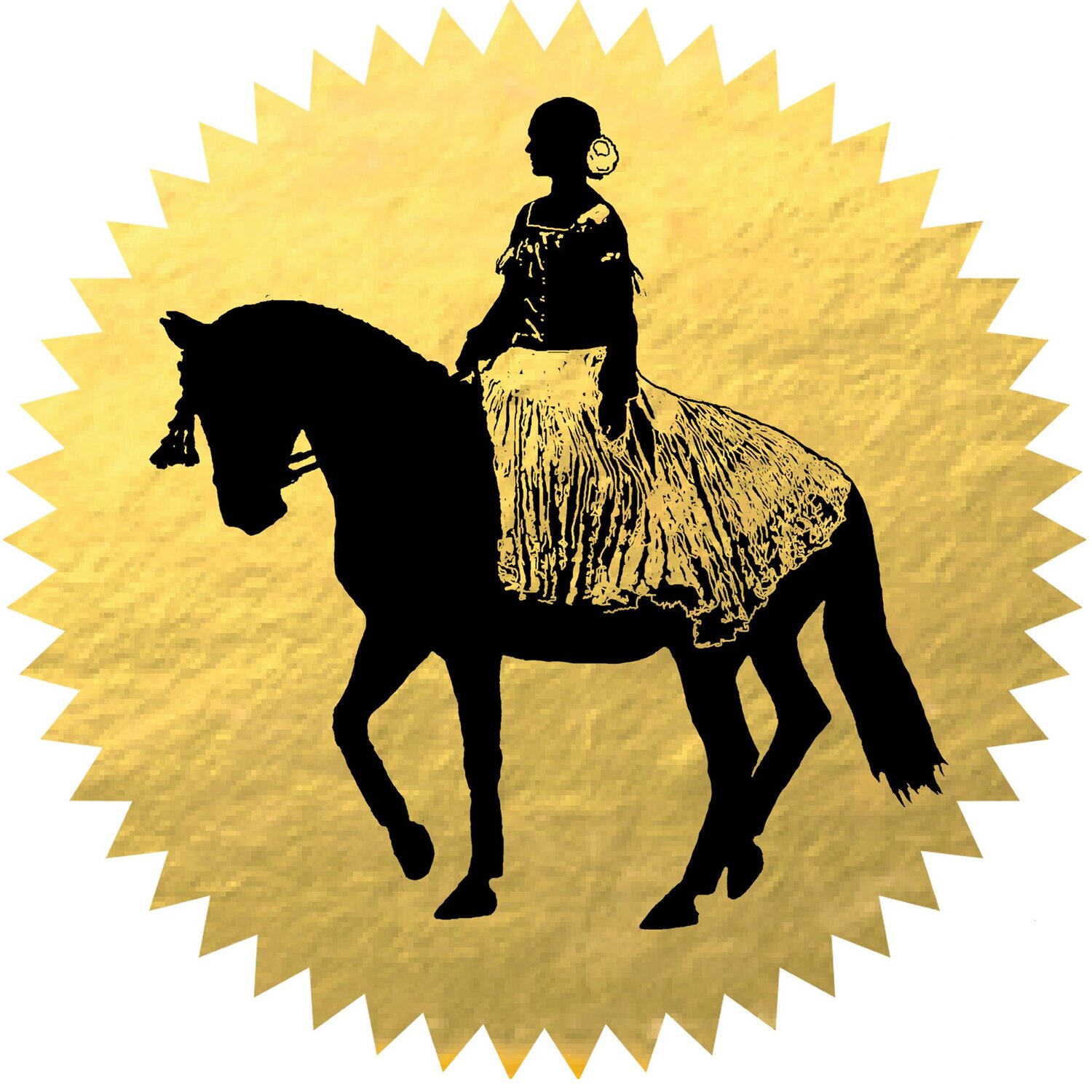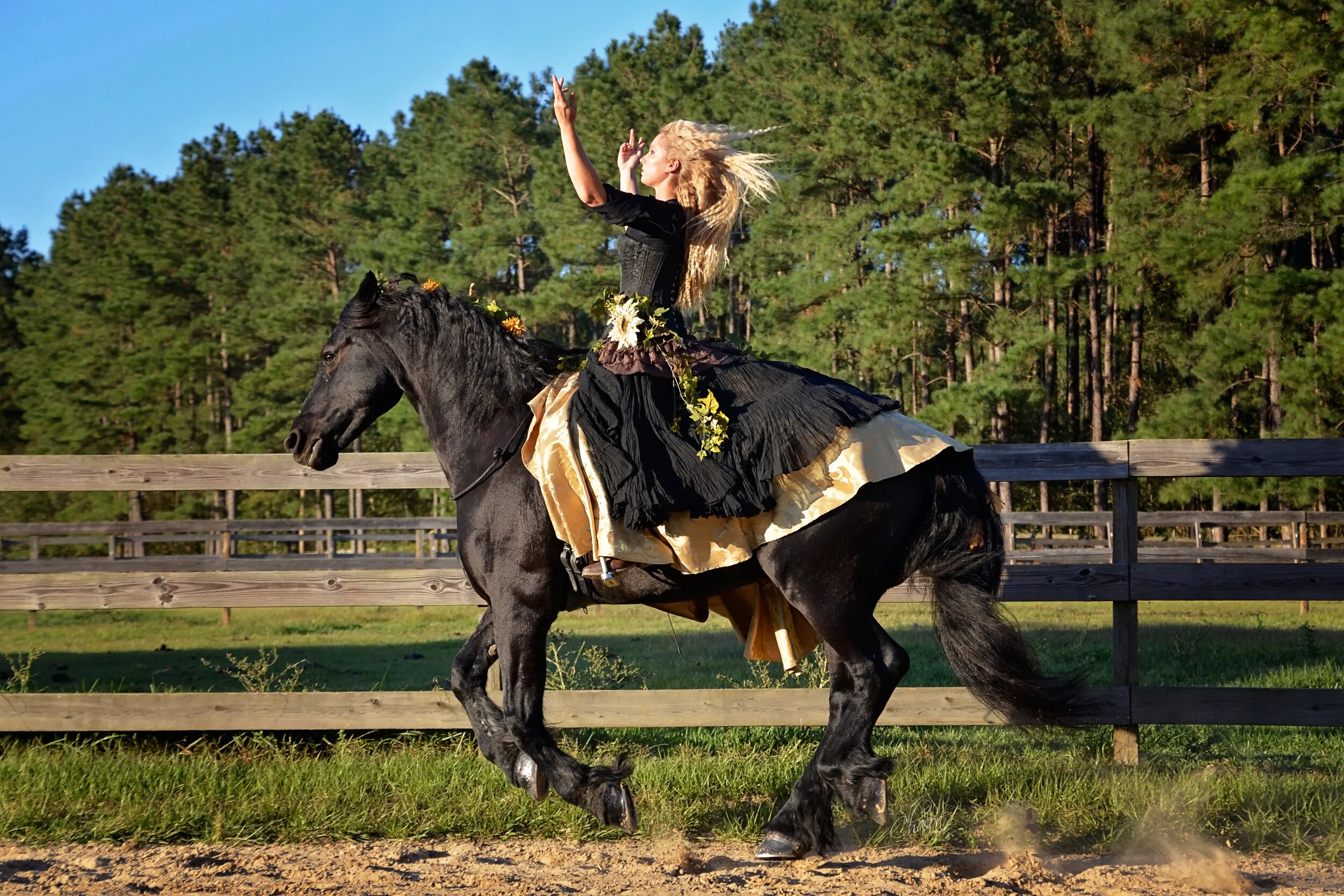HILASON Suede Leather Bareback Pad:
I like the shape and look of this bareback pad and it has the same non-slip surface on the underside that my ThinLine pad has. This pad would work well for a performance routine because it comes in a variety of colors such as Purple, Black, Tan, and Turquoise (shown). It also has a handy strap to help you carry the pad to and fro.
You can use your own girth with this pad which may be a plus or a minus depending on what you prefer. You can purchase this beautiful bareback pad on Amazon. Click here to see all the color options.
Benefits of Riding Bareback
Improve Balance:
Riding bareback will help improve your balance and reveal weaknesses in your riding that can be hidden by the saddle. The horse's spine will help you feel when you are sitting centered or not. I love to feel the horse's back muscles and check that I am sitting evenly on my seat bones. You may also notice if your pad tends to slide to one side or the other, indicating that you also lean or shift too much to one side.
Riding bareback is a great way to loosen your hips, as you allow your legs to relax and drape around your horse the movement of the horse’s back will gently open your hips more and more. This is similar to riding without stirrups in a saddle except that you will also feel the muscles working underneath you.
Improve Transitions:
When you are riding bareback you will feel when the horse is lifting his back. This is particularly helpful for upward and downward transitions. Even if you just practice at the walk, incorporate transitions into the halt and see if you can feel whether the back stays lifted. If the horse starts to drop his back that will cause him to come against the hand, above the bit, and lose connection. You can improve your ability to feel the moment your horse loses his balance and help correct him/her before it becomes a problem.
Improve Steering & Lateral Work:
Practice riding serpentines, circles, and lateral movements to improve your ability to move your horse with your body and not your reins. See if you can get your horse to turn just by looking with your eyes and turning your body so that the horse feels your shoulders, hips, and legs guiding him in a new direction. If your horse does not turn or he actually goes the wrong direction then you will know there is a missing piece to your aids. Perhaps your outside leg is coming off the horse? Perhaps you are turning your shoulders but your hips are stiff and they are not allowing the turn.
In your lateral work try to notice if you slide to the wrong side of the horse or any spots of tension that crop up when you change movements.
In Conclusion
Be mindful of whether your horse is enjoying the bareback experience as you are going along. Some horses are overly sensitive and can get “cold-backed” being ridden bareback. If your horse has back problems such as kissing spine, alignment issues, is underweight, has skin problem like rain rot, or doesn’t like to be brushed, these are reasons you should probably not ride him/her bareback. When you are riding bareback you will be sitting directly on the spine so you want to be sure that your horse is comfortable.
If you have any questions feel free to leave a comment below or email me at beginthedance@gmail.com. Be safe and have fun!














